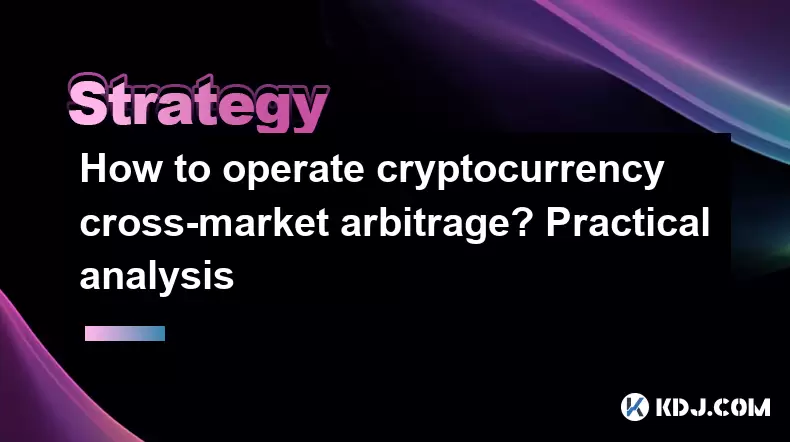-
 Bitcoin
Bitcoin $107,352.1067
0.28% -
 Ethereum
Ethereum $2,429.3531
-0.90% -
 Tether USDt
Tether USDt $1.0001
-0.02% -
 XRP
XRP $2.1894
4.62% -
 BNB
BNB $646.7968
0.36% -
 Solana
Solana $147.4290
4.03% -
 USDC
USDC $0.9998
-0.02% -
 TRON
TRON $0.2756
1.52% -
 Dogecoin
Dogecoin $0.1630
1.14% -
 Cardano
Cardano $0.5612
1.18% -
 Hyperliquid
Hyperliquid $37.0580
-0.05% -
 Bitcoin Cash
Bitcoin Cash $496.9410
-0.09% -
 Sui
Sui $2.7318
3.19% -
 Chainlink
Chainlink $13.1503
0.58% -
 UNUS SED LEO
UNUS SED LEO $9.0766
0.55% -
 Avalanche
Avalanche $17.7220
1.46% -
 Stellar
Stellar $0.2380
1.52% -
 Toncoin
Toncoin $2.8439
0.38% -
 Shiba Inu
Shiba Inu $0.0...01143
1.84% -
 Litecoin
Litecoin $85.8053
1.47% -
 Hedera
Hedera $0.1483
2.70% -
 Monero
Monero $314.3240
2.12% -
 Bitget Token
Bitget Token $4.6725
0.77% -
 Dai
Dai $1.0000
0.00% -
 Polkadot
Polkadot $3.3555
1.28% -
 Ethena USDe
Ethena USDe $1.0001
0.02% -
 Uniswap
Uniswap $7.0890
2.64% -
 Pi
Pi $0.5355
-3.40% -
 Pepe
Pepe $0.0...09393
1.06% -
 Aave
Aave $256.8136
-1.90%
Is it reliable to invest in environmentally friendly coins?
By investing in environmentally friendly coins, investors can align their financial decisions with their environmental values while evaluating factors such as consensus mechanisms, energy consumption, carbon footprints, regulatory compliance, and market performance.
Jan 09, 2025 at 09:08 am

Key Points:
- Understanding the Concept of Environmentally Friendly Coins
- Assessing the Reliability of Green Cryptocurrencies
- Evaluating the Sustainability and Environmental Impact of Cryptocurrencies
- Exploring Verification and Certification Processes
- Considering the Market Performance and Potential Returns of Green Cryptocurrencies
- Examining the Investment Strategies for Environmentally Conscious Investors
Understanding the Concept of Environmentally Friendly Coins:
Environmentally friendly coins, also known as green cryptocurrencies, are digital assets designed to minimize their carbon footprint and environmental impact. They employ energy-efficient consensus mechanisms, such as Proof-of-Stake (PoS) or Proof-of-Authority (PoA), which consume significantly less energy than traditional Proof-of-Work (PoW) mechanisms. These green alternatives aim to reduce the cryptocurrency industry's contribution to climate change and foster a more sustainable ecosystem. By investing in environmentally friendly coins, investors can align their financial decisions with their environmental values.
Assessing the Reliability of Green Cryptocurrencies:
Assessing the reliability of environmentally friendly coins involves evaluating their technical infrastructure, transparency, and regulatory compliance. Consider the following factors:
- Consensus Mechanism: Choose coins that utilize energy-efficient consensus mechanisms, such as PoS or PoA, which significantly reduce energy consumption.
- Transparency: Look for coins with publicly available code and transparent operations. This allows independent verification of their environmental claims.
- Regulatory Compliance: Ensure that the coins comply with relevant regulatory frameworks. This provides legal protections and enhances investor confidence.
Evaluating the Sustainability and Environmental Impact of Cryptocurrencies:
To evaluate the sustainability of environmentally friendly coins, consider their overall environmental impact. Key metrics to review include:
- Energy Consumption: Determine the amount of energy required to mine or process the cryptocurrency. Lower energy consumption indicates a smaller carbon footprint.
- Carbon Footprint: Calculate the greenhouse gas emissions associated with the cryptocurrency's operations. Choose coins with a low carbon footprint to minimize their impact on climate change.
- Resource Usage: Assess the coin's resource usage, including land and water consumption. Consider coins that optimize resource utilization for sustainable practices.
Exploring Verification and Certification Processes:
Various verification and certification processes exist to validate the environmental claims of green cryptocurrencies:
- Independent Audits: Seek out cryptocurrencies that have undergone independent audits from reputable institutions to verify their energy efficiency and carbon footprint.
- Blockchain Analysis: Analyze the cryptocurrency's blockchain data to monitor its energy consumption and environmental impact.
- Third-Party Certifications: Look for coins that have received certifications from organizations dedicated to promoting sustainability in the cryptocurrency industry.
Considering the Market Performance and Potential Returns of Green Cryptocurrencies:
While environmental considerations are important, investors should also consider the market performance and potential returns of environmentally friendly coins:
- Historical Returns: Examine the coin's historical price performance to assess its volatility and growth potential.
- Market Cap and Trading Volume: Consider the coin's market capitalization and trading volume as indicators of its liquidity and stability.
- Investment Strategies: Explore different investment strategies, such as dollar-cost averaging and value investing, to mitigate risks and enhance potential returns.
Examining the Investment Strategies for Environmentally Conscious Investors:
Environmentally conscious investors can use various strategies to invest in green cryptocurrencies:
- Long-Term Investments: Adopt a long-term investment approach to weather market fluctuations and potentially reap long-term gains.
- Sustainable Investing: Seek out cryptocurrencies that align with specific environmental, social, and governance (ESG) criteria to align investments with values.
- Diversification: Diversify investments across a portfolio of environmentally friendly coins to reduce risk and enhance returns.
FAQs:
- Is it risky to invest in environmentally friendly coins?
Investing in any cryptocurrency, including environmentally friendly coins, carries inherent risks. It's crucial to conduct thorough research, evaluate the coin's fundamentals, and implement risk management strategies to mitigate losses.
- Can green cryptocurrencies have a significant impact on the environment?
While environmentally friendly coins consume less energy than traditional cryptocurrencies, their cumulative impact on the environment depends on their adoption and usage. Widespread adoption of green cryptocurrencies can contribute to a more sustainable cryptocurrency ecosystem.
- How can I verify the environmental claims of environmentally friendly coins?
Look for coins that have been independently audited, analyzed by blockchain data, or received third-party certifications that validate their energy efficiency and carbon footprint.
- Are environmentally friendly coins more likely to attract investors?
Growing environmental awareness has increased demand for sustainable investments. Environmentally friendly coins can appeal to investors seeking to align their investments with their environmental values.
- Is it possible to invest in environmentally friendly coins without directly purchasing them?
Yes, investors can gain exposure to environmentally friendly coins through cryptocurrency funds or exchange-traded funds (ETFs) that focus on sustainable or green cryptocurrencies.
Disclaimer:info@kdj.com
The information provided is not trading advice. kdj.com does not assume any responsibility for any investments made based on the information provided in this article. Cryptocurrencies are highly volatile and it is highly recommended that you invest with caution after thorough research!
If you believe that the content used on this website infringes your copyright, please contact us immediately (info@kdj.com) and we will delete it promptly.
- RUVI Token Soars: Can It Eclipse Cardano's Forecast?
- 2025-06-29 02:30:12
- Meme Coin Mania: Can Little Pepe Outshine Shiba Inu and Dogecoin?
- 2025-06-29 02:30:12
- XRP Tokens: Navigating Financial Status and the Art of Buying In
- 2025-06-29 02:50:12
- Shiba Inu, Trump Coin, and the Crypto Bull Run: What's the Deal?
- 2025-06-29 03:50:12
- Coinbase on the 2025 List of Influential Companies: A Crypto Powerhouse?
- 2025-06-29 04:10:12
- Solana, Shiba Inu, and Pepe Coin: What's Hot and What's Not in the Crypto World
- 2025-06-29 03:55:13
Related knowledge

What are the skills of Bitcoin option hedging? Practical case sharing
Jun 24,2025 at 04:01pm
Understanding Bitcoin Option HedgingBitcoin option hedging is a risk management strategy used by traders and investors to protect their positions in the volatile cryptocurrency market. By using options, individuals can limit potential losses while retaining the opportunity for profit. In essence, it allows one to insulate against adverse price movements...

How to use the price difference between Bitcoin spot and futures? Arbitrage strategy
Jun 20,2025 at 02:56pm
Understanding Bitcoin Spot and Futures MarketsTo effectively leverage arbitrage opportunities between Bitcoin spot and futures markets, it's essential to understand the fundamental differences between these two types of markets. The spot market refers to the direct buying and selling of Bitcoin for immediate delivery at the current market price. In cont...

How to increase DeFi lending income? Strategy and risk analysis
Jun 24,2025 at 02:08pm
Understanding DeFi Lending and Its Income PotentialDeFi (Decentralized Finance) lending has emerged as a popular way to earn passive income in the cryptocurrency space. Unlike traditional banking systems, DeFi lending platforms allow users to lend their crypto assets directly to borrowers without intermediaries. The lenders earn interest based on the su...

How to operate cryptocurrency cross-market arbitrage? Practical analysis
Jun 23,2025 at 04:01am
Understanding Cryptocurrency Cross-Market ArbitrageCryptocurrency cross-market arbitrage involves taking advantage of price differences for the same digital asset across different exchanges. The core idea is to buy low on one exchange and sell high on another, capturing the profit from the discrepancy. This strategy relies heavily on real-time market da...

How to make profits from high-frequency cryptocurrency trading? Sharing core skills
Jun 19,2025 at 05:07pm
Understanding High-Frequency Cryptocurrency TradingHigh-frequency trading (HFT) in the cryptocurrency market involves executing a large number of trades at extremely fast speeds, often within milliseconds. This method relies on small price discrepancies across exchanges or within a single exchange’s order book. Traders use complex algorithms and ultra-l...

What are the methods of cryptocurrency quantitative trading? Detailed analysis
Jun 22,2025 at 11:07pm
Understanding the Core of Cryptocurrency Quantitative TradingCryptocurrency quantitative trading refers to the use of mathematical models and algorithms to execute trades in the digital asset market. Unlike traditional discretionary trading, which relies heavily on human judgment, quantitative trading leverages data-driven strategies to identify profita...

What are the skills of Bitcoin option hedging? Practical case sharing
Jun 24,2025 at 04:01pm
Understanding Bitcoin Option HedgingBitcoin option hedging is a risk management strategy used by traders and investors to protect their positions in the volatile cryptocurrency market. By using options, individuals can limit potential losses while retaining the opportunity for profit. In essence, it allows one to insulate against adverse price movements...

How to use the price difference between Bitcoin spot and futures? Arbitrage strategy
Jun 20,2025 at 02:56pm
Understanding Bitcoin Spot and Futures MarketsTo effectively leverage arbitrage opportunities between Bitcoin spot and futures markets, it's essential to understand the fundamental differences between these two types of markets. The spot market refers to the direct buying and selling of Bitcoin for immediate delivery at the current market price. In cont...

How to increase DeFi lending income? Strategy and risk analysis
Jun 24,2025 at 02:08pm
Understanding DeFi Lending and Its Income PotentialDeFi (Decentralized Finance) lending has emerged as a popular way to earn passive income in the cryptocurrency space. Unlike traditional banking systems, DeFi lending platforms allow users to lend their crypto assets directly to borrowers without intermediaries. The lenders earn interest based on the su...

How to operate cryptocurrency cross-market arbitrage? Practical analysis
Jun 23,2025 at 04:01am
Understanding Cryptocurrency Cross-Market ArbitrageCryptocurrency cross-market arbitrage involves taking advantage of price differences for the same digital asset across different exchanges. The core idea is to buy low on one exchange and sell high on another, capturing the profit from the discrepancy. This strategy relies heavily on real-time market da...

How to make profits from high-frequency cryptocurrency trading? Sharing core skills
Jun 19,2025 at 05:07pm
Understanding High-Frequency Cryptocurrency TradingHigh-frequency trading (HFT) in the cryptocurrency market involves executing a large number of trades at extremely fast speeds, often within milliseconds. This method relies on small price discrepancies across exchanges or within a single exchange’s order book. Traders use complex algorithms and ultra-l...

What are the methods of cryptocurrency quantitative trading? Detailed analysis
Jun 22,2025 at 11:07pm
Understanding the Core of Cryptocurrency Quantitative TradingCryptocurrency quantitative trading refers to the use of mathematical models and algorithms to execute trades in the digital asset market. Unlike traditional discretionary trading, which relies heavily on human judgment, quantitative trading leverages data-driven strategies to identify profita...
See all articles

























































































